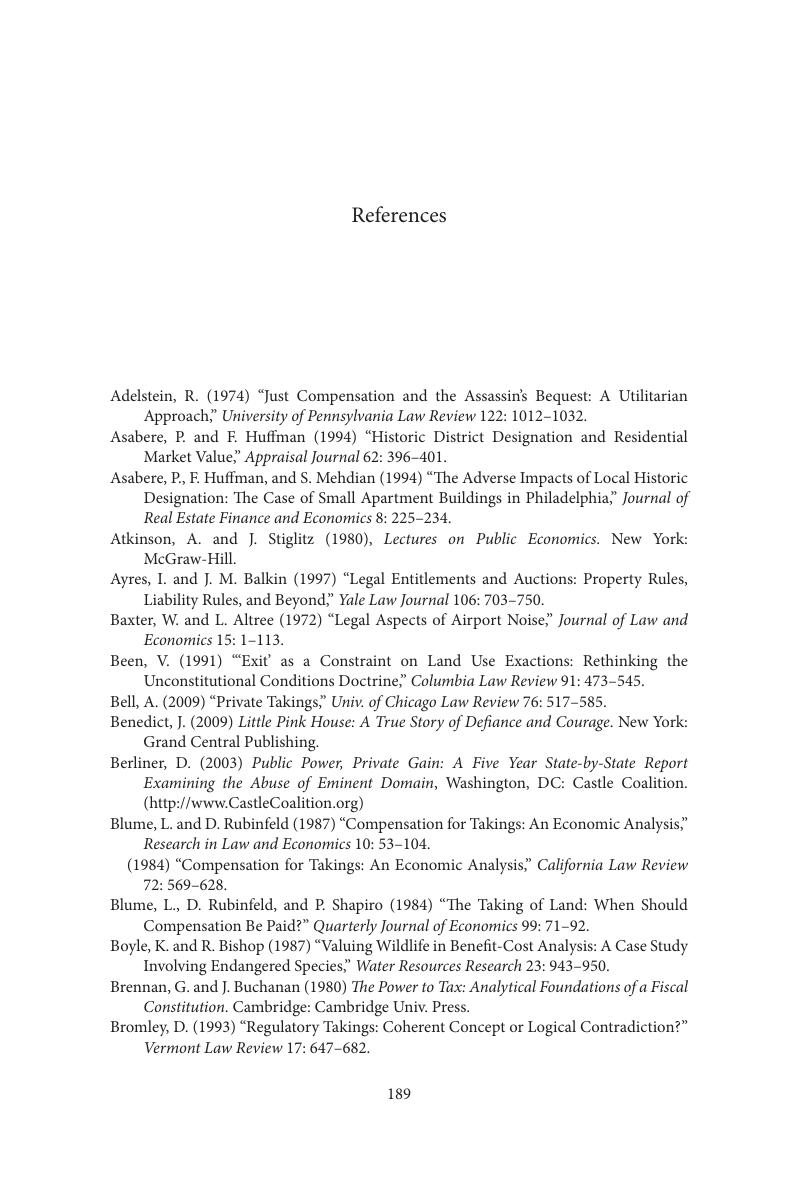References
Published online by Cambridge University Press: 05 June 2012
Summary

- Type
- Chapter
- Information
- The Economic Theory of Eminent DomainPrivate Property, Public Use, pp. 189 - 196Publisher: Cambridge University PressPrint publication year: 2011



